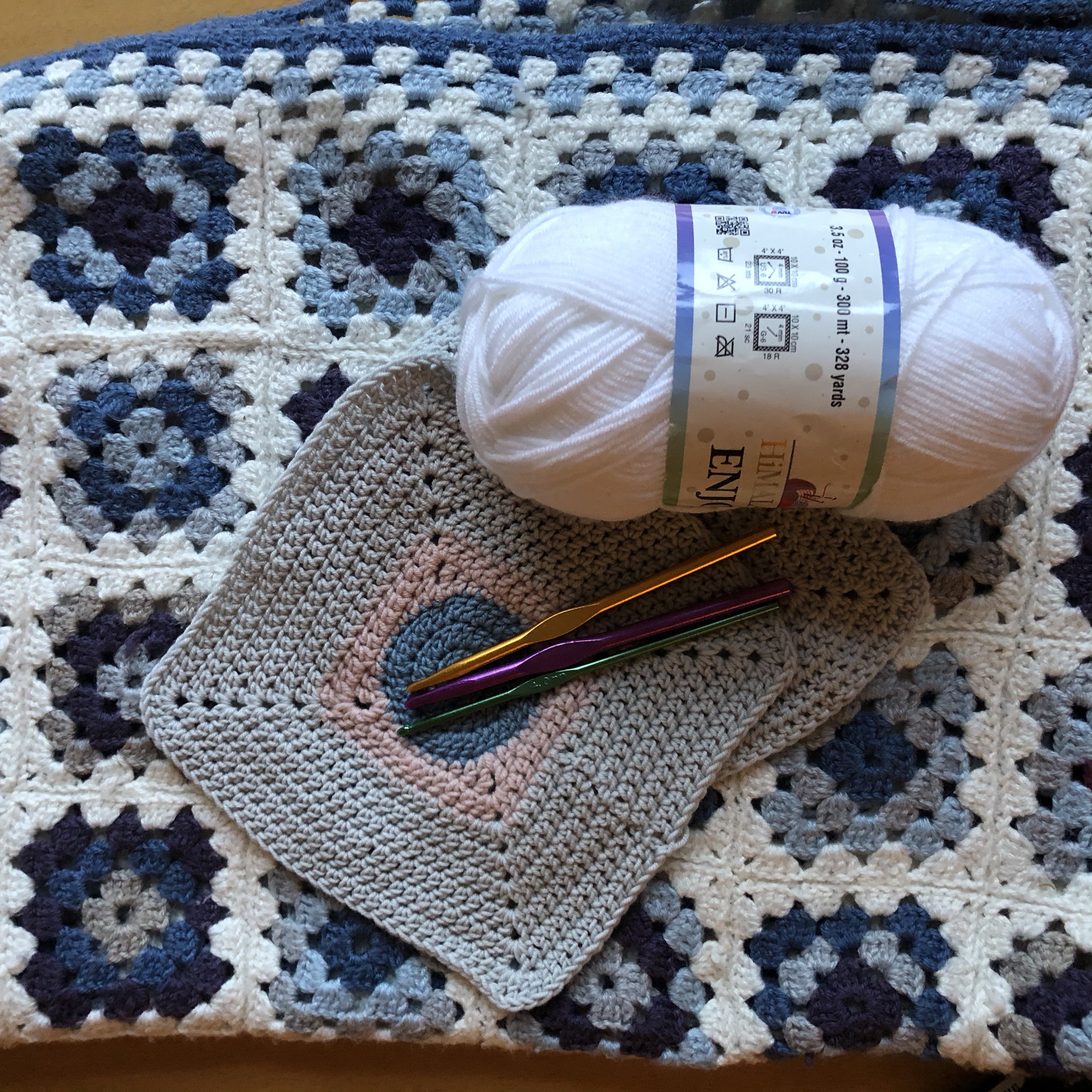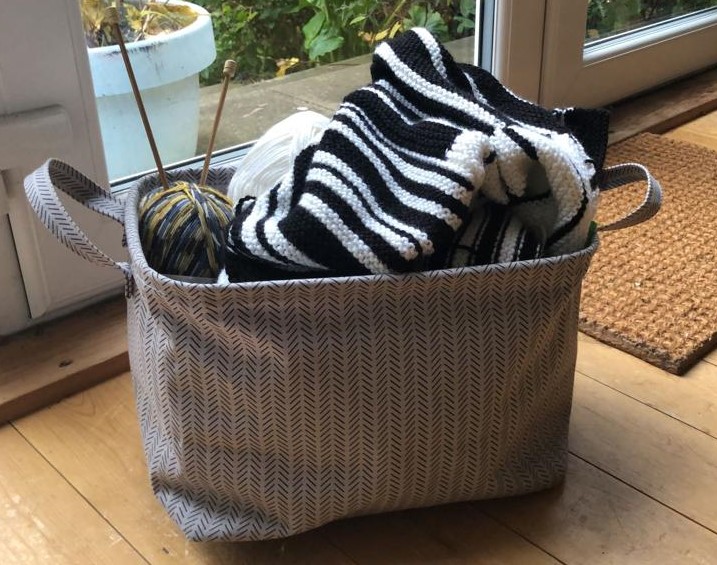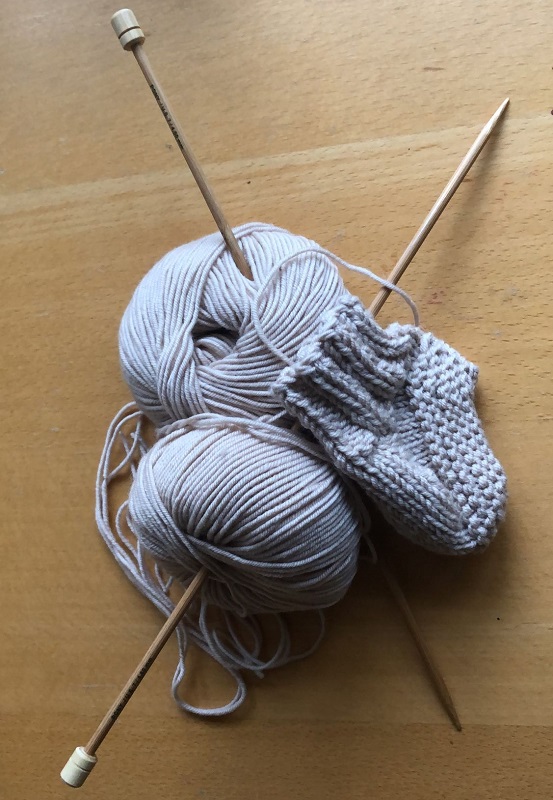Calling all knitters and crocheters!
Zibiah Loakthar, our Cuimhne Coordinator writes
 Wintry weather and the knitting season are here again!
Wintry weather and the knitting season are here again!
Have you been knitting and crocheting for years, or picked up new craft skills during lockdown? Are you looking out for a new challenge and hobby for the soon to be upon us 2022?
Our Irish in Britain Cuimhne team warmly encourage you to share with us photos of your craft work and inspire others!
Why knit?
There are many reasons why people love to knit or crochet. Some of us are drawn to knitting through being inspired by the diverse beautiful, useful and quirky things that might be made out of wool. As a creative and practical activity, knitting can promote happiness and general wellbeing. Unwinding balls of wool into beautiful tangible creations may help us unwind, reducing stress, lowering our blood pressure, promoting calmness.
Knitting may feel like a form of relaxing meditation focusing our fingers, stilling ourselves in one place and leaving us free with our thoughts. For others, knitting complex patterns can be a fun challenge and a way of training our concentration skills and testing our patience! Knitting or crochet is easily transportable. Where wool can be sourced cheaply, it can be an inexpensive hobby; knitting items for ourselves, or as gifts for others, may even help save money too.
Social knitting
Knitting can lend itself well to social activity. It can bring together people from different generations and can contribute to a sense of connection across generations in different ways. People of different ages can knit together. Knitting can be a way of fostering a sense of belonging, linking people past and future generations. Some of us may recall older relatives knitting and connect with family by taking up knitting ourselves. Knitting patterns and knitted creations, such as shawls and blankets, are sometimes passed on through families from one generation to the next and some of us may create items that can be passed forward to generations who might live long after us.
There are lots of wonderful ideas for collaborative pieces of craft work. People may enjoy knitting squares that can be joined together into family or community artistic tapestries.
These days, where people cannot physically gather in one location to knit, there are lots of creative uses of technology to enable people to feel connected knitting. Virtual meetings can be set up for people to come together. For people who may find using a laptop or i-pad or computer challenging, there may be other technology that can help. See for example our Irish in Britain pilot of KOMP technology.
As well as bringing together people of different ages, knitting can bring together people of different cultural backgrounds too. Although societies sometimes appear to gender activities such as knitting, of course knitting can be enjoyed by anyone. Men knitting is not a modern phenomenon. Right back in the 14th century we know there were knitting guilds exclusively for men aiming to develop the artistry of knitting!
Inclusive knitting projects
People living with dementia and family carers and can be included in group knitting projects and knitting circles too.
A person who is losing their word memory may feel self-conscious about joining conversation based social groups. Often people can remember manual skills long after word memory starts to fail; coming together with others to knit can be a great way of being in company with people without feeling under pressure to use a lot of language.
People with early-stage dementia may be dextrous knitters and enjoy actively passing on their knowledge of practical skills, teaching friends family and volunteers how to knit and crochet by practical demonstration without the pressure of having to recall speech vocabulary.
Not everyone knows how to knit but of course a diagnosis of dementia does not mean a person cannot learn anything new. There are lots of success stories of people diagnosed with dementia picking up new skills and crafts; for some, this might be knitting.
Ideas for reminiscence sessions around wool crafts
There are lots of conversations that might help people access memories around woollen crafts and different senses can be engaged to help people connect with their memories.
You may be able to gather a range of knitted and crocheted items and garments from friends, community members and charity shops for a reminiscence session (eg knitted jumpers, socks, stockings, toys, baby blankets) including a range of textures and stitches (eg different cable stitches), and wool of different textures.
People may also be willing to lend old printed knitting patterns to support a reminiscence activity.
The sound of clicking needles and the smell of oiled yarn and soap might help people recall memories linked to knitting. There are lots of possible conversations that might be had around topics such as:
shearing sheep/ gathering and carding fleece ready for spinning into wool
winding wool
knitting around a fireplace
washing woollen items
uses for worn out garments
mending and darning garments
special knitting projects such as blankets for new babies and knitted toys
storing woollen items away from moths
patterns for instance those shared by clans for Aran sweaters
Asking people experiencing memory loss a lot of “Do you remember …” questions may put people on the spot. These kinds of questions may upset people who realise there are things they cannot remember. Instead, try gentler conversation starters that may help people recall and share memories such as, “I wonder what it would have been like to help wind wool” or “I have heard that people used to wash woollen socks by hand, that must have been hard work”.
 Your photos please!
Your photos please!
We know there are a lot of keen knitters and crocheters in our Irish in Britain network. We would love to see your designs and hear about projects you may have set up to promote inclusive knitting. We would also love to see photos of handknitted things especially Aran Knitting or Crochet Collars used for Irish dancing costumes.
If you would like to share photos of craftwork with our network (high resolution are best) please email these to champions@irishinbritain.org and with your permission, we will post these to inspire others!
